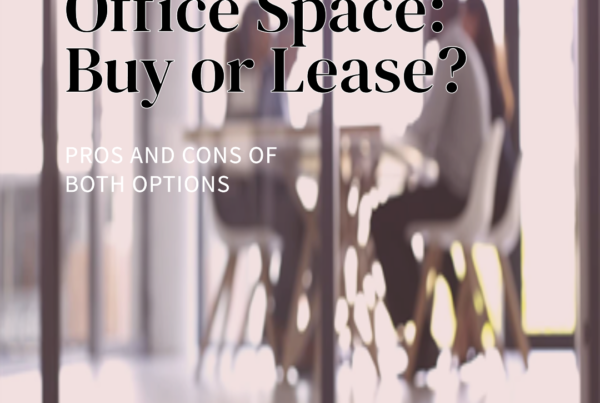
 Image Credit: MaximeUtopix / Pixabay
Image Credit: MaximeUtopix / Pixabay
As vaccines roll out and COVID cases are declining, more and more companies are resuming operations and opening their doors back up to employees. Many businesses that had to close their offices due to lockdowns are now looking for new office space for rent. Some have already found offices for lease and are designing them to be safe for both their workers and clients.
Here are some changes that you can expect to see in your office when you get back to work
Hybrid Work Is Here to Stay
Before the novel Corona virus, commutes were getting longer. According to the US census, the average commute was a record high in 2018; around 27 minutes.
Employees have become more interested in balancing work and home responsibilities. Post-pandemic, many workers prefer to be closer to family, opting for suburban locales, like Clifton Park. Locations once considered exurban or remote are now more attractive when it comes to renting commercial space.
While rents in many downtown office locations are decreasing, suburban office space in those same markets is often commanding a premium. As we enter a post-COVID period, many organizations are trying to maintain their urban presence, but finding their employees prefer the suburbs.
Limited Face-to-Face Time with Colleagues
You will observe a mixed form of social interaction when you get back to the office. People will need to continue practicing all the suggested social distancing guidelines, even if you work in a small office. Many companies will establish open spaces and one-way walking systems in corridors to help people maintain distance from other employees. Moreover, offices will limit the number of people in restrooms, lunch rooms, meeting rooms, or elevators to ensure everyone follows the guidelines.
There may be additional precautionary measures implemented to prevent the virus from spreading in higher-risk places such as kitchens. Companies may even ban the use of fridges and microwaves to prevent cross-contamination of drinks and food. Therefore, workers may have to bring their own snacks and drinks and keep them in their own workspace.
Some companies may stagger the return of their workforce. They will schedule workers to report to the office on different days. Work shifts may also get altered, and some may even work on alternate weeks. If you work in a large office that can accommodate a lot of people at one time, you may still have a percentage of co-workers working from home as the hybrid model of work becomes more common and acceptable.
Design and Ventilation are Now Priority
People want to feel safe and healthy and need to work in a clean environment. They want to believe that their office buildings are more than just energy-efficient green buildings. Employees want to see cleaning protocols, limited people on elevators, upgraded filtration system and air filters, and directional symbols in office spaces and common areas.
Sharing is Not Caring Anymore
Whether it is a large space or small, companies will establish policies on sharing beverages and food and even the water cooler to limit the chances of contracting a virus. The CDC has suggested finding alternatives to shared food and drinking items. They recommend replacing bulk snacks and coffee pots with single-person packaged items.
Everyone should be prepared for no longer having a large kitchen area. Additionally, one may have to carry a cold or hot container to maintain food temperature. Ask HR for the new/revised policy if you use medicines that you need to store in a refrigerator.
Less Zoom Fatigue and Fewer Meetings
At the beginning of the pandemic, it was difficult for employees to adapt and attend seemingly endless zoom meetings, one after another. This created zoom fatigue, and back-to-back live group discussions and meetings made it challenging to do other things. During the last year, people have understood the psychological impacts of never-ending meetings.
Almost every manager and executive is now aware of what it feels like. Hence, there will be a structure to address the cost of meetings. Companies will recognize that people will get more stress and burnout if they stay on calls throughout the day.
Another thing that will reduce meeting fatigue is that as more people work in the office, there is less need for online meetings. Workers will be able to discuss their matters in large meeting rooms instead of Zoom.
The New Digital Tech Will Remain
Even if your company has invested in larger office space, you will need to continue using software and online digital apps that were adopted in the lockdown. Offices may recommend using Zoom for quick discussions, rather than speaking face to face. You may also need to use Slack to ask questions via messages. These policies will help you follow social distancing guidelines.
Some clients may also feel uncomfortable meeting you in person to discuss project details; and will appreciate you continuing to use these tools to communicate project information. Clients will be able to reach you through information portals, video conferencing, and secure cloud storage. These tools will provide flexibility to you so that you can decide how and when your clients can access your services.
Workers Still Want Private Spaces
Although many workers will prefer to work in the office on alternate days, employers will surely invite their employees to their new offices. Businesses will also design meeting rooms with VR meeting technology or videoconferencing to engage employees who are still working remotely.
As people have worked from home for a longer period, they now want to get back to the office, especially apartment dwellers and parents. However, organizations still need to invest in different parts of the building for individual-focused work, such as small offices that you can book by the hour or building privacy booths.
Popular larger corporate offices will also develop quiet and peaceful areas similar to a library, where small groups or individuals can go to work without any work noises inside the office building. In general, many companies will avoid going for cubicles and opt for a more flexible and open atmosphere.
Rigorous Hygiene Procedures
Before asking workers to get back to the office, employers will use risk assessment. This will help them ensure that all employees will be completely safe in the working space. The risk assessment will help to determine which activities can lead to the spread of the virus, how to avoid this activity, and how likely virus contamination can occur. An appropriate risk assessment with experts means that you don’t need to worry about getting sick.
Similar to restaurants, supermarkets, and retail stores, employers will get the offices deep cleaned regularly. Workers will also have access to the necessary PPE, such as masks and hand sanitizers.
Bottom Line
Businesses are trying to figure out ways to create a better workspace environment that can cater to the needs and concerns of employees. For this reason, more and more companies are looking for new office rentals to design them according to their preferences. Having a new, cleaner, and bigger space could also help companies to facilitate employees with all the mentioned facilities and features in their offices.




